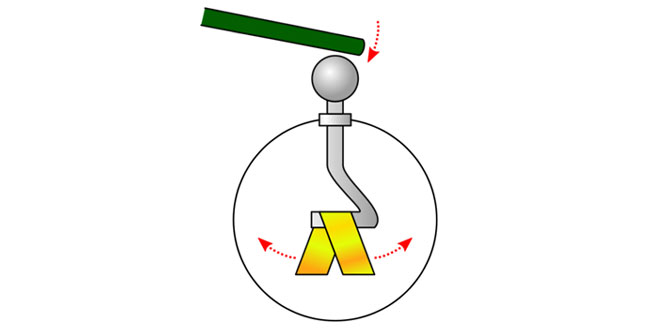Question: Suggest three measures to protect ourselves from lightning.
Answer: Three measures to protect from lightning are as follows:
- Try to remain indoors.
- Do not carry an umbrella during lightning.
- If in open; do not take shelter under a tall tree or any tall structure.
Question: Explain why a charged balloon is repelled by another charged balloon whereas an uncharged balloon is attracted by another charged balloon?
Answer: When both the balloons carry similar charges, they are repelled by each other. But a charged balloon attracts an uncharged balloon because a charge object has a tendency to attract an uncharged object.
Question: Describe with the help of a diagram an instrument which can be used to detect a charged body.
Answer: Structure of Electroscope: It is made of a glass jar. A vertical brass rod is inserted into the jar through a cork. The top of the brass rod has a horizontal brass rod or a brass disc. Two gold leaves are suspended from the brass rod; inside the jar.
Question: Explain the structure of lightning conductor.
Answer: This is a simple device which protects a building from being hit by lightning. It is composed of a vertical metallic rod which usually has a trident at the top. The base of the metallic rod is attached to thick metallic wire; which goes very deep inside the earth. This metallic wire provides a passage for earthing.
Question: How do tectonic plates create earthquake?
Answer: The tectonic plates are in continuous motion. They keep on brushing against each other or striking each other. When a tectonic plate brushes against another or strikes another tectonic plate; it results in vibrations in the tectonic plates. These vibrations are experienced by us in the form of an earthquake.
Question: Explain the structure of seismograph.
Answer: Seismograph is a device which records the seismic activities. It is composed of an oscillator, writing device and a roll of paper. The writing device is attached to the oscillator. In case of an earthquake, the oscillator begins to oscillate. This creates oscillation in the writing device; which plots wave-like patterns on the paper. The wave-like pattern is then analysed by seismologist to interpret the various features of an earthquake.
 Class Notes NCERT Solutions for CBSE Students
Class Notes NCERT Solutions for CBSE Students


